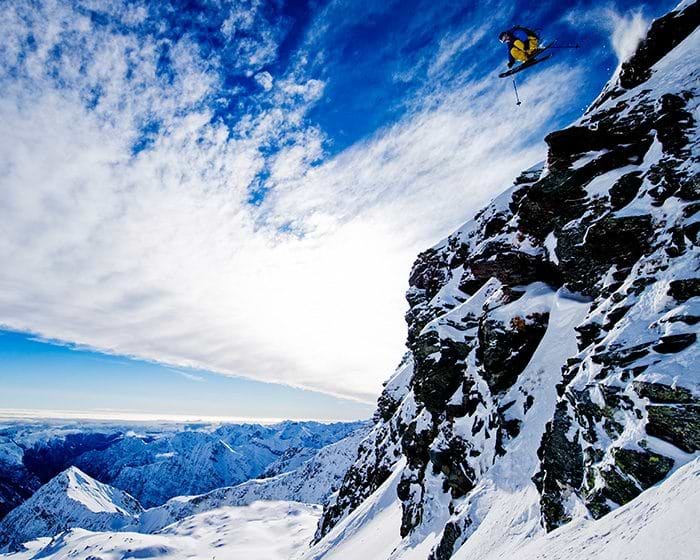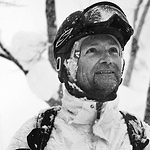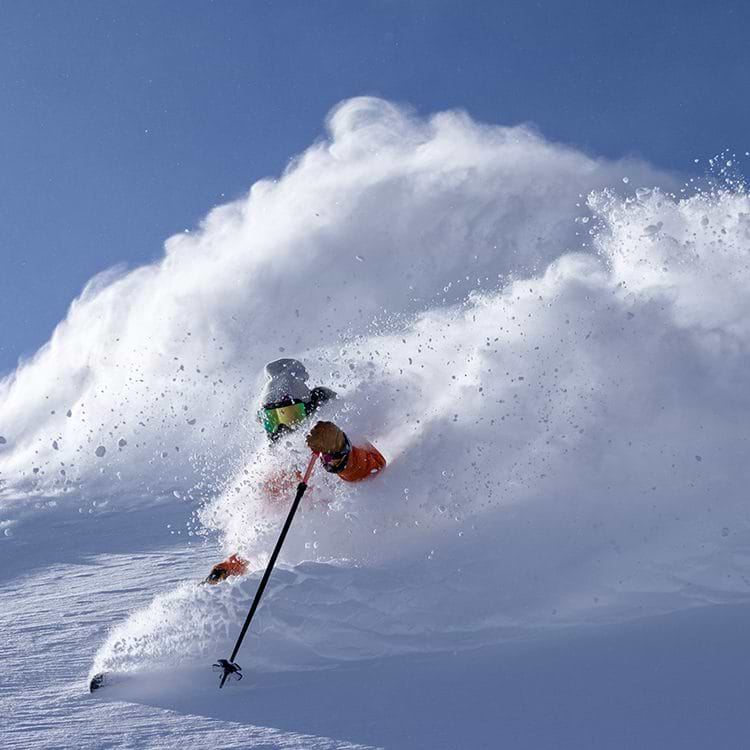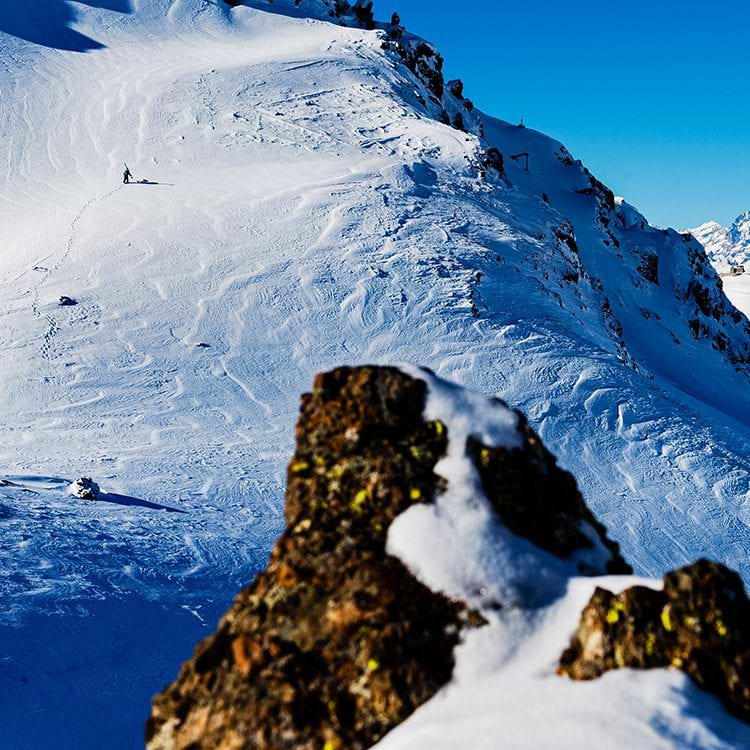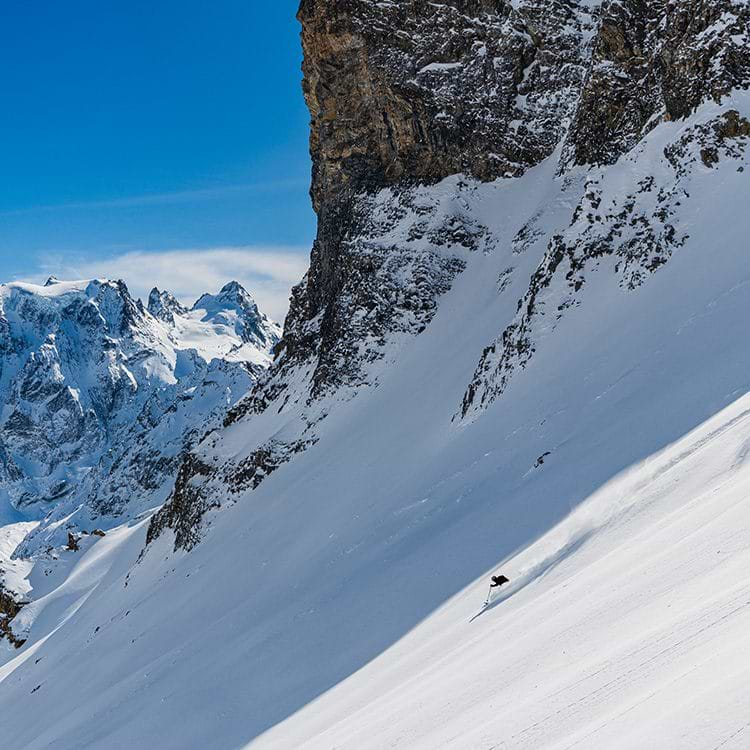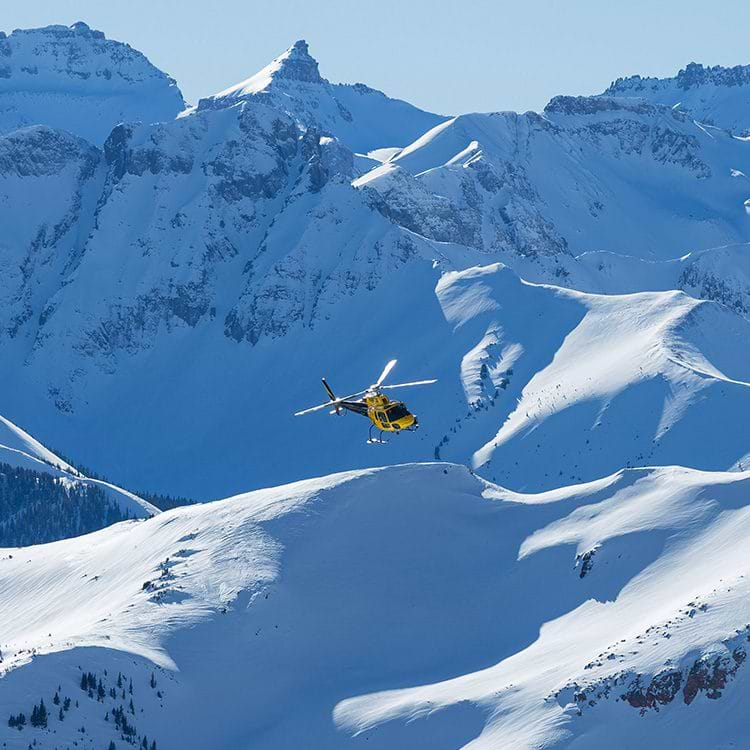With record-beating lifts, enormous vertical on The Alp’s second highest peak, huge freeride terrain, high-altitude rifugios and the feel of a true backwater, the biggest question for first-time visitors to Alagna, one of Italy’s most picturesque ski resorts, is “Why haven’t I heard of this place?”
The answer? Access. Remote and underserviced for decades, Alagna-Valsesia may have joined the gigantic Monterosa Ski consortium spread across the southern valleys of Monte Rosa in 2004, but it remains oddly unheralded.
Flanked to the west by the massif’s central access, Gressonay-La Trinité, and continuing in that direction, is the triad’s third member, Champoluc-Frachey. While you can easily ski between Alagna and Champoluc in a single day by car, they’re as far apart as you can get in the western Alps — at least a six-hour haul.
Every valley in the Alps is a new adventure, and Alagna is no exception. The only way in is by road from Milano, a journey that features Roman aqueducts and mountaintop forts. As you approach Alagna through ancient Walser hamlets (a Germanic people who once populated the area), you begin to track their preserved, aged-wood buildings which give Alagna — founded in the 12th century — its decided Old-World charm.
Though there’s skiing for all levels, Alagna features one of the world’s most incredible lift-served verticals and plenty of complex steeps. Its range of off-piste descents earned it the nickname “Italy’s La Grave” after France’s marquee off-piste resort. In the early 1990s, La Grave locals called it “Valley X to keep the larger ski world from finding it, so Alagna cognoscenti followed suit by calling their freeride Nirvana “Valley Y”.
Back in the day, it took three lifts to rise the 850 meters (2,790 feet) to Pianalunga, but now, it’s a straight shot from the centre of the village on a more modern conveyance. At this point, you can ride another cable car up to the Passo Salati and access Gressoney or jump on the chairlift to Bocchetta delle Pisse, ascending from there to the Punta Indren Glacier and its range of 2,000+ vertical-metre descents. This terrain is why Alagna is an upper-intermediate-to-expert destination; for everyone else, there’s a gentler section, Wold, just north of the village.
For over a century, the most crucial mountain landmark was 140-year-old Rifugio Guglielmina, a historic alpine hut built in 1878 that drew visitors like Queen Margherita, wife of Italy’s King Umberto I, and many other prominent guests. Sadly, Guglielmina burned down in 2011 and was deemed too costly to rebuild. Six remaining refugios serve the area, the most dramatic being Margherita’s eponymous hut, which sits at a breath-stealing 4,554 metres (14,941 feet) on Punta Gnifetti. It gives views of the Matterhorn and Mont Blanc and is Europe’s highest building. Dropped there by helicopter, you can make an incredible 3,000-metre vertical descent back to Alagna.
As a testament to Alagna’s off-piste focus, there are only seven marked trails, none of which matter unless the snow is terrible elsewhere. A pair of skins and a guide (easy enough to find) are more valuable than a map to make the most of the terrain and stay safe.
Because skiing in Alagna takes precedence, there are places to celebrate your descents, but don’t expect any après scene. That holds for Monterosa Ski in general, as even in Gressoney, the only entertainment you’re likely to find is drunken ski bums strumming guitars in the Hotel Dufour.
On stormy days, it’s worth dropping over the Col d’Olen to access Gressoney’s superb tree-skiing. Since Italians don’t like to ski when it’s snowing and seem to only run the lifts on snowy days in case the occasional Canadian, American or Swede shows up, you can lap untracked pow there when visibility is lacking in Alagna. If it’s an actual down day in Alagna — as in lifts aren’t running — buy some local grappa and stroll around, checking out the historic central church — where you can always pray to the Walser ghosts that the lifts open soon.

























